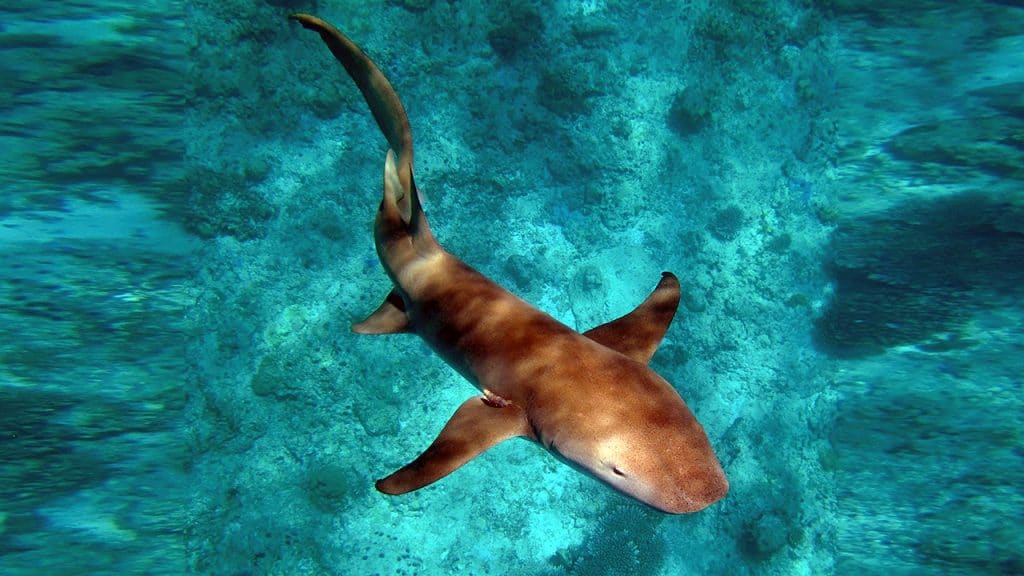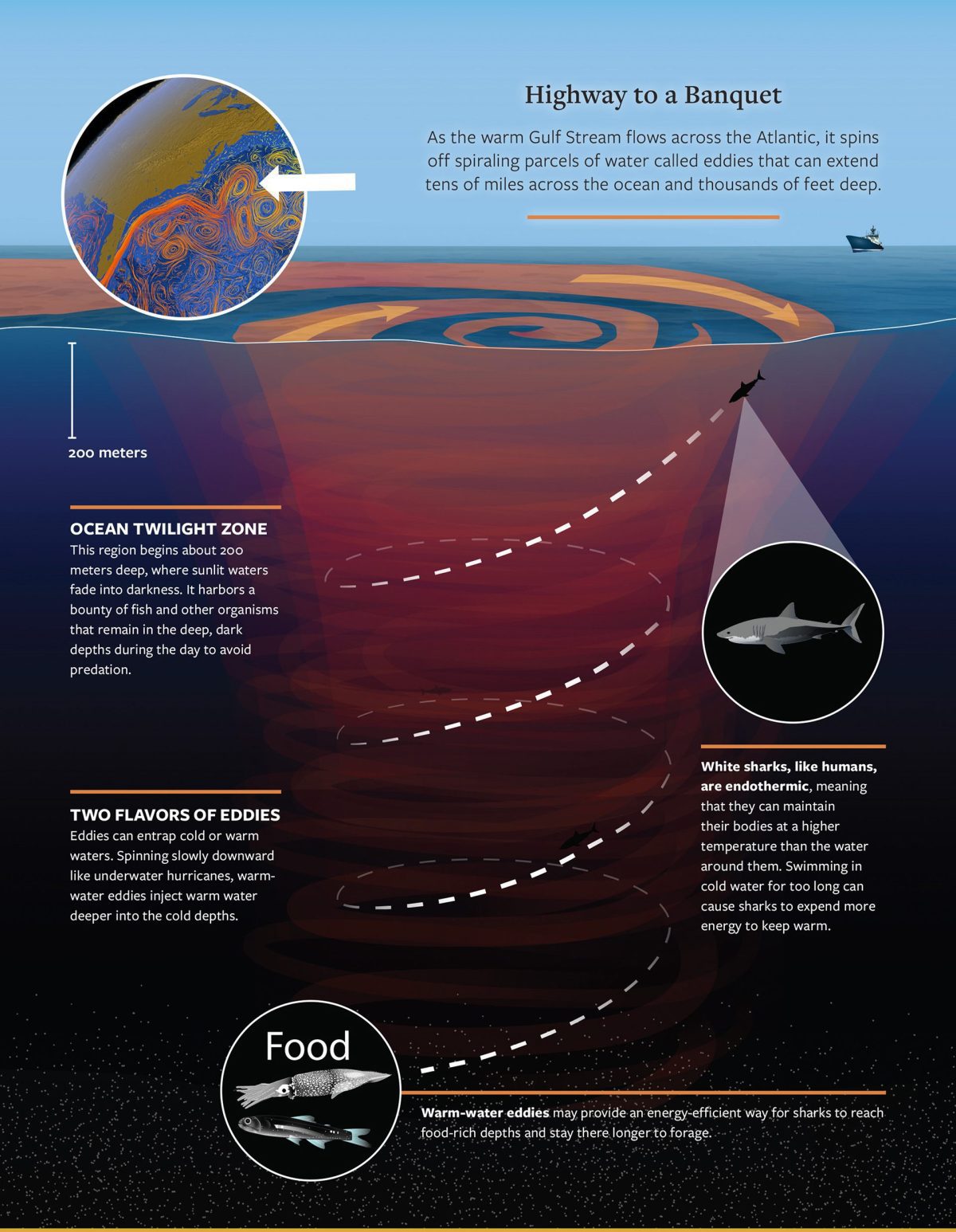
Nurse shark. Photo by Konrad Hughen, ©Woods Hole Oceanographic Institution
What are sharks?
- Sharks are elasmobranchs, a group of animals that includes rays and skates, whose members have a skeleton made of cartilage, rather than bone, and, unlike most other fish, lack a swim bladder.
How many species of shark are there?
- There are more than 500 species of sharks and at least one species is found in every ocean, including the Arctic Ocean.
How big are sharks?
- The smallest shark is the deepwater dogfish (Etmopterus perryi) at only 8 inches and the largest is the whale shark (Rhincodon typus), which, at 13 meters, (42 feet), is the largest fish in the ocean.
How long do sharks live?
- The lifespan of a shark depends on the species, but is at least 70 years in white sharks (Carcharodon carcharias).
What color are sharks?
- The coloration of most sharks has evolved to be dark on top and light on the bottom so that they can’t be easily seen by their prey.
Threats to sharks
- Tens of millions of sharks are killed by humans each year (compared to 12 humans killed by sharks in 2011).
- Nearly all species of sharks in the North Atlantic have declined significantly over the past two decades.
- Sharks are threatened primarily by overfishing, which has been largely driven in recent years by the rise in demand for sharkfin soup, as well as by fishing activities that do not target sharks, but that capture them as bycatch.
- Many shark species mature late, have a long gestation period (up to two years), and give birth to less than a dozen pups. All these factors contribute to low productivity rates among sharks, making many populations particularly vulnerable to fishing mortality.
Are sharks important to tourism?
- A 2011 study by the Australian Institute of Marine Science found that a single reef shark in Palau generates nearly $2 million for the tourist industry over its lifetime.
White Sharks
- White sharks (sometimes called great white sharks) are the largest predatory fish in the sea, but they are not all white—the shark’s back may be dark blue, gray, brown or black.
- White sharks can be found along the coasts of ever continent except Antarctica, but scientists suspect there are less than 10,000 remaining.
- White sharks may live for more than 70 years, and they do not start breeding until they are at least 20 years old.
- Individuals grow to an average of 15 feet (4.6 meters) in length, though specimens exceeding 20 feet (6 meters) and weighing up to 5,000 pounds (2,268 kilograms) have been recorded.
- No one has ever reliably observed white sharks mating.
- Like many sharks, white sharks are born live and can swim immediately.
- An individual white shark might lose (and re-grow) more than 1,000 teeth in its lifetime.
- A white shark's liver may make up as much as one-quarter of its entire weight and acts as a swim bladder enabling the shark to remain buoyant.
- White sharks have powerful tails that can propel them through the water at speeds of up to 30 miles per hour (50 kmh) and can even enable them to leave the water completely.
- A white shark's main prey items include fish, sea lions, seals, small toothed whales, and sea turtles. Scientists estimate that after a big meal, an individual can last up to three months before needing to eat again.
- White sharks rarely attack people and when they do, it is probably because they mistaken the person for their usual seal prey.
- More than 70 percent of known victims of white shark attacks survive because the shark likely realizes it has made a mistake and doesn’t finish off its prey.

















